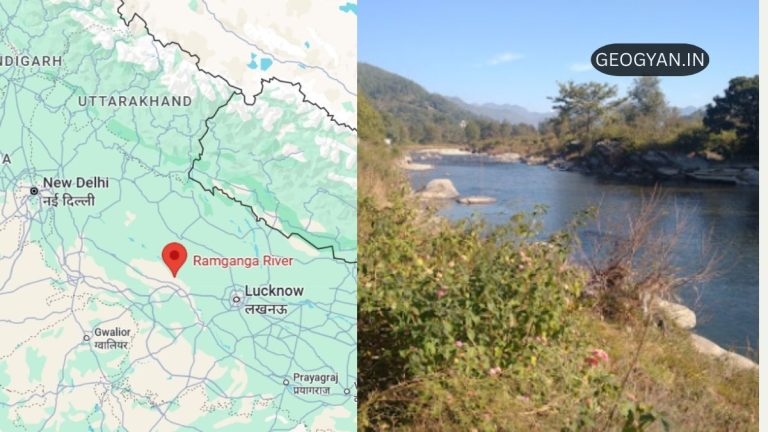Estimated reading time: 2 minutes
Table of contents
Why Beas River is in News
The Beas River grabbed national attention in August 2025 as relentless monsoon rains and dam water releases led to severe floods across Punjab and Himachal Pradesh. Over 30,000 acres of agricultural land were submerged in Kapurthala, and towns like Manali suffered major road washouts, displacing thousands. This widespread devastation highlights the river’s powerful impact on lives, livelihoods, and regional stability.
About Beas River – A Quick Overview
The Beas River is one of the five great rivers of Punjab, originating at Rohtang Pass (14,308 ft) in Himachal Pradesh and traveling 470 km before joining the Sutlej at Harike. Known as the eastern limit of Alexander’s invasion (326 BC), it sculpts fertile valleys and supports millions along its banks.
- It receives waters from rivers like Parbati, Uhl, Malana, Solang, Manalsu, and many more, which are mainly snow-fed and monsoonal, contributing to its perennial nature.
- Key Towns: Kullu, Mandi, Bajaura, Pandoh, Sujanpur Tihra, Nadaun, Dehra-Gopipur, and Amritsar are prominent settlements along the river.
- According to Indian mythology, sage Vyasa, the composer of the Mahabharata, is said to have created the river, hence the name “Beas” (from “Vyasa”).
- Another legend relates to Rishi Vashishta and the naming of the river as “Vipasha”—the “cord-breaker” after a miraculous event involving the sage.
Geographical Aspects: Origin, Course & Dams
- It starts at Rohtang Pass, western Himalayas, Himachal Pradesh.
- Beas River flows through Kullu, Mandi, Kangra (HP), enters Punjab, and joins Sutlej at Harike.
- Total Length of the river is approximately 470 km; and drainage Basin is near about 20,303 sq km.
- Significant Damslocated on the river are:
- Pandoh Dam (Mandi): Diverts water to Sutlej for hydropower.
- Pong Dam (Kangra): Forms Maharana Pratap Sagar for irrigation, power.
- This river supports endangered Indus River Dolphins and shapes the lush Kullu and Kangra valleys.
FAQs
Q1. Where does the Beas River originate?
A1. The Beas originates from Rohtang Pass (Himachal Pradesh) at 14,308 ft elevation.
Q2. Into which river does Beas merge?
A2. It meets the Sutlej River at Harike, Punjab.
Q3. What are the major dams on Beas?
A3. Important structures include Pandoh Dam (Mandi) and Pong Dam (Kangra), both vital for hydropower and flood control.
Q4. What is the geographical length and basin size of Beas?
A4. The Beas stretches about 470 km, with a drainage area of 20,303 sq km.





























